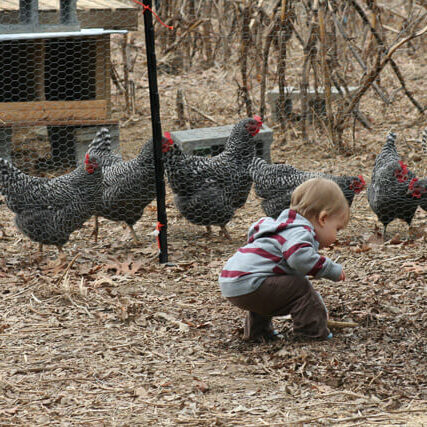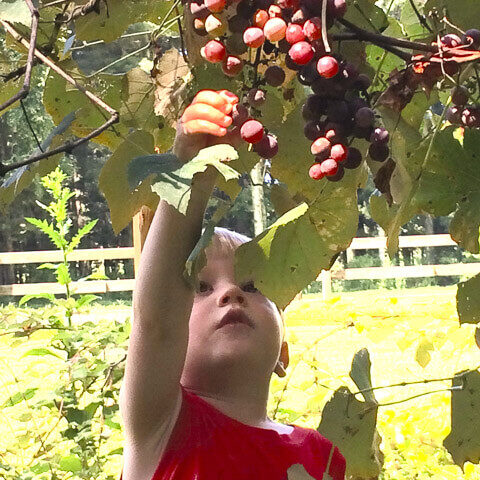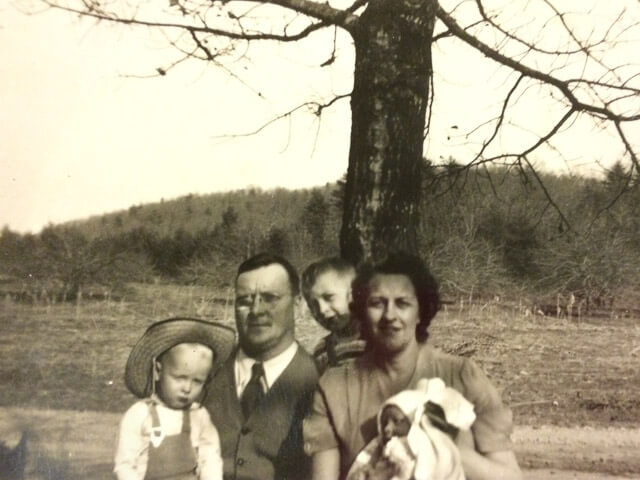The Farm is a work in progress. It doesn’t even have an official name, although we’ve tried out dozens (maybe hundreds) of monikers. We’ve decided to wait and let the land teach us its name.
Our family has been tending this piece of earth for more than one hundred years. Over that century, the Hendersons have had gardens, orchards, pastures, ponds, wood lots and a mill. Today, we (the Landers) rent a small portion of the property and help care for about twenty acres. We’ll buy part of the land in coming years, and we’d love to continue tending the whole acreage long into the future.
Our Practices
- Permaculture and ecology-based gardening - We keep permaculture design and ecological principles in mind as we make plans for the farm. We’re developing a site plan to help us make long-term choices, and we’ll share it with you when we have a “first draft” ready.
- Biointensive gardening - Some of our newest garden beds are double-dug following John Jeavons’s example. And his How to Grow More Vegetables is a well-worn reference.
- Traditional farming - Grandpa’s Garden is set up in rows and worked by tractor and tiller. He’s allowing us to mix organic practices in where it makes sense. Our big focuses here are using integrated pest management, organic fertilizers and pest control, and cover cropping.
- Pastured animals - We use rotational grazing for our poultry (egg and meat birds) with plans to add other animals to the mix. Sheep may be next.
- Wildlife habitat - From brush piles to pollinator plants, we try to grow in a way that celebrates and supports wildlife. And when we have problems, we try to manage pests with a wholistic approach.
- Earth-savvy creation - Whether it’s a chicken coop or garden art, we reuse and repurpose old materials when we create something new.
Farm Features
Here are some of our current and upcoming landmarks and projects.
- Herb spiral
- Meadow for beneficial insects (It’s a “mini-meadow” right now.)
- Lots of compost piles
- Grandpa’s garden (8,000 sq ft of traditional rows)
- Wide bed garden (2000 sq ft and growing!)
- Barn (Nana and Grandpa have horses here now. In the future, perhaps sheep? cows? rabbits?)
- Orchard (A handful of old apple trees, including a yummy early-ripening red “June Apple.”)
- Small fruits (Blueberries, raspberries, blackberries and grapes)
- Asparagus bed (Ever expanding!)
- Seasonal spring and creek (There’s also a dug-out area that could become a pond with some work and a new dam.)
- Pine and oak forests
- Two pastures and one hay field
- Two family houses (with yards, flower beds, one “full body” sandbox and Nana’s incredible playground)
- Several sheds with lots of treasures ripe for re-purposing
- Chicken coops (Two small coops in our rotational paddocks and plans to make a coop-on-wheels this winter.)
The Stats
The farm sits in a broad basin of the Blue Ridge Mountains (North Carolina, U.S.A., Earth). If you’re curious, here’s more about our climate and conditions:
- Biome: Temperate broadleaf deciduous forest
- Soils: Clay loam with moderate drainage
- Winds: Warm, southwesterly winds (and thunderstorms) in summer and cold, northerly winds in winter.
- Rainfall, annual average: 55 inches
- Snow, annual average: 8 inches
- Elevation: 2,170 ft.
- USDA Plant Hardiness Zone: 7a
- Average Last Frost: April 26 (+/- 13 days)*
- Average First Frost: Oct. 12 (+/- 9 days)*
- Growing Season: ~170-180 days*
*These last three numbers are based on NCSU data from 1951-1980. Anecdotally, the growing season is longer now.





